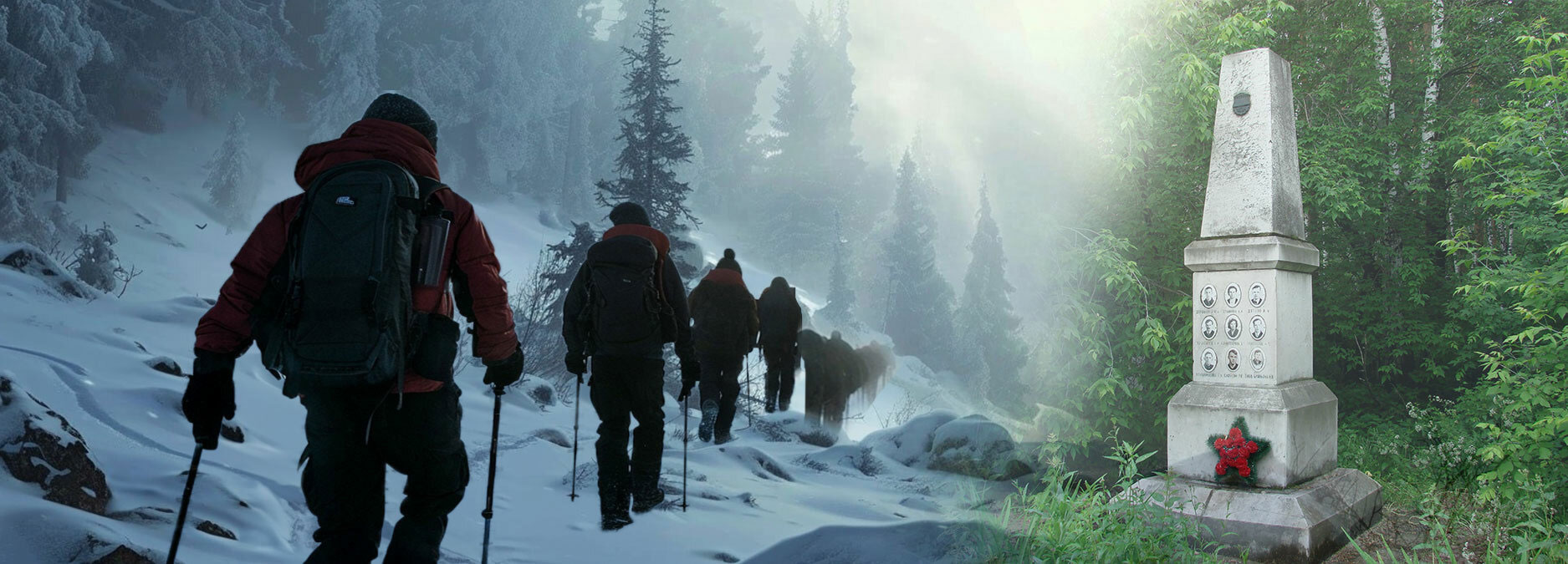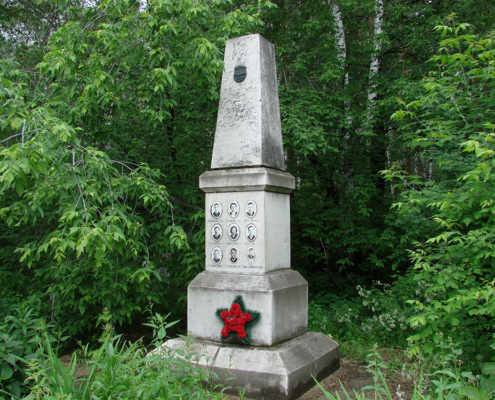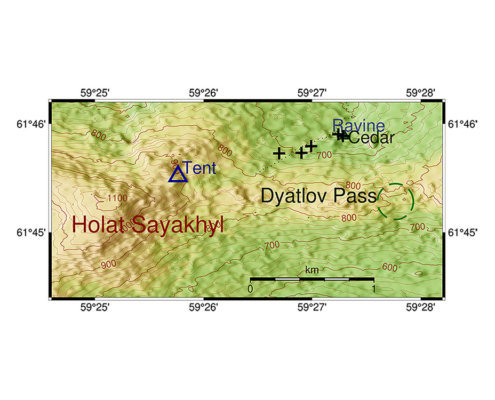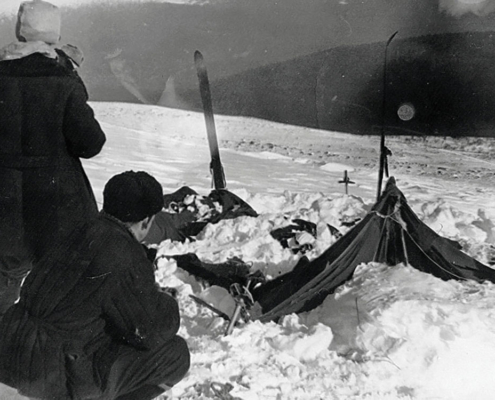Myth or Reality:
The Dyatlov Pass Incident – Aliens, Yeti, or Soviet Secrets?
By Maximo Veron and Toby Martinez, Roswell Daily Record
In the early hours of February 1, 1959, in the Ural Mountains, a region between the Republic of Komi and the Sverdlovsk Oblast in Russia, nine young hikers camping at what is now known as Dyatlov Pass met a gruesome and inexplicable end.
The incident unfolded on the slopes of Kholat Syakhl, which translates to ‘Dead Mountain’ in the Mansi language. The chosen route was classified as a Category III, indicating very high risk due to the harsh climate and challenging terrain. However, these seasoned adventurers, led by Igor Dyatlov, were no strangers to such treacherous paths.
The expedition’s primary goal was to reach Mount Otorten’s summit at 4048 feet above sea level. Originally composed of eight men and two women, Yuri Yudin, one of the members, opted out due to illness just before the trek began.
The journey officially commenced on February 1, with Dyatlov planning to send a telegram 12 days later to confirm their safe progress. However, the message never arrived, prompting a search alarm. Investigations later revealed that the group lost their way, deviating about 6.21 miles from their intended path. Despite their expertise, they set up camp, hoping to wait out the weather before resuming the expedition.
Rescue teams discovered the deserted camp on February 26. All belongings were left behind, but the tent was slashed from the inside. Footprints led from the destroyed camp into the woods. A cold, extinguished fire and the lifeless bodies of Yuri Krivonischenko and Yuri Doroshenko were found. Intriguingly, both were barefoot, clad only in their underwear, and seemingly attempted to climb a nearby tree before succumbing to the cold.
The search continued, revealing Dyatlov, Zinaida Kolmogorova, and Rustem Slobodin frozen in defensive positions. Slobodin had a 0.71-inch hole in his skull, and Kolmogorova displayed facial and hand abrasions. After a two-month search, the remaining four bodies were found buried under meters of snow, each with peculiar injuries.
Nicolas Thibeaux had a shattered skull, Liudmila Dubinina suffered broken ribs, a fractured neck, and a missing tongue, while Alexander Kolevatov’s radioactive clothing raised questions. Alexander Zolotarev’s chest was fractured, teeth missing, and his appearance suggested rapid aging, reminiscent of Kolmogorova. Strangely, an orange tint covered the skin of all four bodies.
Russian authorities kept the incident under wraps for decades, releasing the file in the ’90s, noting “unknown forces” as the cause. The secrecy fueled speculations and theories.
The USSR and the KGB?
Among the things found in the camp was a belt that Yuri Yudin, the only survivor of the group, indicated did not belong to any of his friends and dark glasses that only soldiers who were part of the USSR army possessed. There are theories that the Soviet military was carrying out nuclear and secret weapons tests in the area where the bodies were found, but that something went wrong, and that is why they ended up killing these students.
This theory would explain why they kept the files secret for so long. In addition, it would also give reasons for the fact that one of the doctors in the investigation observed that they had not found nine bodies but 11, but the police removed the last two without giving information about who they were.
The Yeti?
Over the years, thousands of stories have been heard about a giant beast identified as ‘the Yeti’ inhabiting the forests in Kholat Syakhl. More than 5,000 people have reported seeing it in the mountains, so one of the most popular theories is that this beast was responsible for ending the lives of hikers.
This theory is supported by one of the photos. Which were revealed from the camera found in the camp. In this, you can see a large, dark figure at the bottom of the forest. Furthermore, in one of the diaries found, the last line of what the young people had written said: “The Yeti.”
A documentary titled “Russian Yeti: The Killer Lives” aired in 2016 on the Discovery Channel and thoroughly explored the possibility that a yeti was responsible for these atrocities.
Aliens?
A group of hikers about 50 km from the accident reported to authorities that they had seen “strange orange spheres in the night sky to the north,” probably in the direction of Kholat Syakhl, on the night of the incident. In adjacent areas, sightings of these spheres of light were also reported continuously from February to March 1959 and of “bright, circular flying discs disappearing over the horizon” by several independent witnesses, including members of the meteorological service and some military.
From the cameras belonging to the hikers found in the camp, the photos they had taken could be revealed. In one of them, you can clearly see many lights in the sky, which would support this theory—investigators of the incident claim that the group had contact with beings from another planet. The most significant evidence was the orange color that the skin of the corpses had acquired and the signs of inexplicable aging.
In 2011, the History Channel show “Ancient Aliens” stated that beings from another planet were indeed to blame for this incident.








 KGRA Digital Broadcasting
KGRA Digital Broadcasting KGRA Digital Broadcasting
KGRA Digital Broadcasting